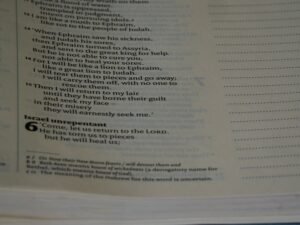Introduction
In today’s digital age, having a well-designed website is crucial for businesses in the lodging industry. A website serves as the online storefront for hotels, resorts, and other lodging establishments, and it is often the first point of contact for potential guests. Therefore, it is essential to create a website that is intuitive and user-friendly, as this can greatly impact user experience and conversion rates. In this article, we will explore the importance of intuitive lodging website design and provide tips for creating a website that engages users and drives bookings.
Importance of Intuitive Lodging Website Design
The design of a website plays a significant role in user experience and can greatly impact conversion rates. A poorly designed website can frustrate users, leading them to abandon the site and seek alternatives. On the other hand, an intuitive and user-friendly website can enhance user engagement and satisfaction, ultimately leading to higher conversion rates.
When users visit a lodging website, they are typically looking for specific information, such as room rates, availability, and amenities. If this information is not easily accessible or if the website is difficult to navigate, users may become frustrated and leave the site. By designing a website that is intuitive and easy to navigate, lodging establishments can provide a positive user experience and increase the likelihood of conversion.
Understanding User Behavior for Effective Design
To create an intuitive lodging website, it is crucial to understand user behavior and preferences. User research can provide valuable insights into how users interact with websites and what they expect from a lodging website. By understanding user behavior, lodging establishments can make informed design decisions that cater to their target audience.
User research can be conducted through various methods, such as surveys, interviews, and usability testing. Surveys and interviews can help gather information about user preferences, expectations, and pain points. Usability testing involves observing users as they interact with a website and identifying areas of improvement. By conducting user research, lodging establishments can gain a deeper understanding of their target audience and design a website that meets their needs and expectations.
Creating a User-Friendly Navigation System
One of the most important aspects of intuitive lodging website design is a clear and intuitive navigation system. A well-designed navigation system allows users to easily find the information they are looking for and navigate through the website seamlessly. Here are some tips for designing a user-friendly navigation system:
1. Keep it simple: Avoid overwhelming users with too many navigation options. Stick to a simple and straightforward menu structure that is easy to understand and navigate.
2. Use descriptive labels: Use clear and descriptive labels for navigation links. Avoid using vague or generic terms that may confuse users.
3. Provide search functionality: Include a search bar on the website to allow users to quickly find specific information. Make sure the search function is prominently displayed and easily accessible.
4. Use visual cues: Use visual cues, such as dropdown menus or breadcrumbs, to help users understand their current location within the website and navigate back to previous pages.
Streamlining the Booking Process
The booking process is a critical step in the user journey, and it is essential to make it as streamlined and frictionless as possible. A complicated or lengthy booking process can deter users from completing their reservation and lead to abandoned bookings. Here are some tips for simplifying the booking process:
1. Minimize form fields: Only ask for essential information during the booking process. Minimize the number of form fields to reduce friction and make the process faster for users.
2. Provide a progress indicator: If the booking process involves multiple steps, provide a progress indicator to show users how far they are in the process. This helps users understand the length of the process and reduces uncertainty.
3. Offer guest checkout: Allow users to complete their booking as a guest, without requiring them to create an account. This can help reduce friction and make the process faster for users.
4. Provide clear instructions: Clearly explain each step of the booking process and provide instructions on how to proceed. This helps users understand what is expected of them and reduces confusion.
Importance of Mobile Optimization
With the increasing use of smartphones and tablets, it is crucial for lodging websites to be optimized for mobile devices. A mobile-friendly website ensures that users can easily access and navigate the site on their mobile devices, leading to a positive user experience and increased conversion rates. Here are some tips for designing a mobile-friendly website:
1. Use responsive design: Implement responsive design techniques to ensure that the website adapts to different screen sizes and resolutions. This allows the website to be easily accessible and readable on any device.
2. Optimize page load speed: Mobile users often have slower internet connections, so it is important to optimize the website’s load speed. Compress images, minify code, and reduce the number of HTTP requests to improve page load times.
3. Simplify navigation: Mobile screens are smaller, so it is important to simplify the navigation menu for mobile users. Use a hamburger menu or a collapsible menu to save screen space and make navigation easier.
4. Design for touch interaction: Consider the touch interface when designing for mobile devices. Use larger buttons and clickable elements to accommodate touch gestures and make it easier for users to interact with the website.
Enhancing User Experience with Visual Elements
Visual elements play a crucial role in enhancing user experience on a lodging website. Well-chosen and well-placed visuals can capture users’ attention, convey information, and create a positive impression. Here are some tips for incorporating visual elements into website design:
1. Use high-quality images: Use high-resolution images that showcase the lodging establishment and its amenities. High-quality images can create a positive impression and entice users to explore further.
2. Incorporate videos: Videos can provide a more immersive experience and give users a better sense of what to expect. Use videos to showcase rooms, amenities, and other features of the lodging establishment.
3. Use visual hierarchy: Use visual hierarchy to guide users’ attention and highlight important information. Use larger fonts, bold colors, and contrasting elements to draw attention to key messages and calls to action.
4. Use white space: White space, or negative space, refers to the empty space between elements on a webpage. It helps create a clean and uncluttered design, making it easier for users to focus on the content.
Incorporating Social Proof to Boost Credibility
Social proof is a powerful tool for boosting credibility and trust on a lodging website. Social proof refers to the influence that the actions and opinions of others have on our own behavior. By incorporating social proof into website design, lodging establishments can build trust and encourage users to make a booking. Here are some tips for incorporating social proof:
1. Display customer reviews: Display customer reviews and testimonials prominently on the website. Positive reviews can help build trust and reassure potential guests that they are making the right choice.
2. Showcase awards and certifications: If the lodging establishment has received any awards or certifications, display them on the website. This can help establish credibility and differentiate the establishment from competitors.
3. Highlight social media presence: Display social media icons and links to the lodging establishment’s social media profiles. This allows users to see the establishment’s social media activity and engage with the brand.
4. Show real-time booking activity: Display real-time booking activity, such as recent bookings or availability updates. This can create a sense of urgency and encourage users to make a booking.
Utilizing Call-to-Action Buttons for Conversions
Call-to-action (CTA) buttons are an essential element of any lodging website, as they guide users towards the desired action, such as making a booking or requesting more information. Designing effective CTA buttons can greatly impact conversion rates. Here are some tips for designing effective CTA buttons:
1. Use contrasting colors: Use colors that stand out from the rest of the website’s design to make the CTA button more noticeable. Choose colors that create a sense of urgency or convey a positive emotion.
2. Make it clear and concise: Use clear and concise language on the CTA button to communicate the desired action. Avoid using vague or generic terms that may confuse users.
3. Use action-oriented language: Use action-oriented language that encourages users to take the desired action. For example, instead of using “Submit,” use “Book Now” or “Reserve Your Room.”
4. Place it strategically: Place the CTA button in a prominent location on the website, such as at the top of the page or next to important information. Make sure it is easily visible and accessible to users.
Ensuring Website Security for User Trust
Website security is of utmost importance for lodging websites, as users need to trust that their personal and financial information is safe. A secure website not only protects users’ data but also builds trust and credibility. Here are some tips for ensuring website security:
1. Use SSL encryption: Implement SSL (Secure Sockets Layer) encryption to secure the connection between the user’s browser and the website. This ensures that data transmitted between the user and the website is encrypted and cannot be intercepted by hackers.
2. Display security badges: Display security badges or trust seals on the website to assure users that their information is secure. These badges can be obtained from reputable security providers.
3. Regularly update software: Keep the website’s software, including the content management system and plugins, up to date. Regular updates often include security patches that address vulnerabilities.
4. Use strong passwords: Use strong passwords for all user accounts and administrative access to the website. Encourage users to create strong passwords and consider implementing two-factor authentication for added security.
Measuring Success with Analytics and Testing
To ensure the effectiveness of a lodging website, it is important to measure its performance and make data-driven design decisions. Analytics and testing can provide valuable insights into user behavior, website performance, and areas for improvement. Here are some tips for measuring success with analytics and testing:
1. Set up website analytics: Set up a website analytics tool, such as Google Analytics, to track key metrics, such as website traffic, conversion rates, and user behavior. Use these insights to identify areas for improvement and make data-driven design decisions.
2. Conduct A/B testing: A/B testing involves comparing two versions of a webpage to determine which one performs better. Test different design elements, such as headlines, images, or call-to-action buttons, to see which version leads to higher conversion rates.
3. Monitor user feedback: Monitor user feedback through surveys, feedback forms, or social media. Pay attention to user comments and suggestions to identify areas for improvement and address any issues or concerns.
4. Continuously iterate and improve: Use the insights gained from analytics and testing to continuously iterate and improve the website. Implement changes based on data and user feedback to optimize the website’s performance and user experience.
Conclusion
In conclusion, intuitive lodging website design is crucial for engaging users, enhancing user experience, and driving bookings. By understanding user behavior, creating a user-friendly navigation system, streamlining the booking process, optimizing for mobile devices, incorporating visual elements, utilizing social proof, designing effective call-to-action buttons, ensuring website security, and measuring success with analytics and testing, lodging establishments can create a website that meets the needs and expectations of their target audience. By implementing the tips provided in this article, lodging establishments can create a website that stands out from the competition and drives bookings.




